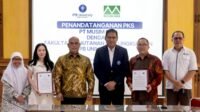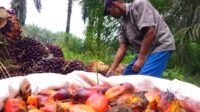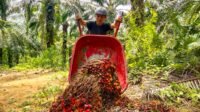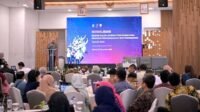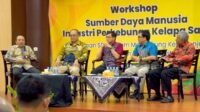PALMOILMAGAZINE, BANDUNG – The 3rd Technology and Talent Palm Oil Mill Indonesia (TPOMI) officially concluded on Wednesday, July 10, 2025, bringing together key stakeholders—from government regulators to industry players—to discuss strategies for a more efficient and sustainable palm oil industry in Indonesia.
Opening the final day, Putu Juli Ardika, Director General of Agro Industry at the Ministry of Industry (Kemenperin), emphasized the urgency of securing a reliable, high-quality, and sustainable supply of raw materials, particularly crude palm oil (CPO) and palm biomass.
“The adoption of innovation and technology can no longer be postponed,” said Putu. “Given the limited potential for land expansion, increasing productivity must rely on optimizing three technological pillars: hardware, humanware, and infoware.”
Also Read:
For the hardware pillar, Kemenperin is pushing for the adoption of environmentally friendly processing technologies. One standout initiative is the promotion of Steamless POME-Less Palm Oil Technology (SPPOT), aimed at reducing emissions and industrial waste.
“We’ve built a supportive ecosystem for SPPOT, including simplified licensing processes, restructuring programs offering reimbursements of up to 35% for equipment purchases, product standardization, and financing for low-carbon factory investments,” Putu explained.
In terms of humanware, the Ministry is prioritizing vocational education and workforce training programs to better align labor skills with industry needs—an approach grounded in the “link and match” concept.
Digital Backbone for Indonesia 4.0
The infoware component focuses on accelerating the digital transformation of the palm oil sector under the broader Indonesia 4.0 roadmap. A key initiative is SIPROSATU, a digital platform designed to serve as the data backbone for palm oil mill mass balance reporting.
“This platform will be supported by regulations requiring all industry players to digitally report their operational performance,” said Putu.
Additionally, Kemenperin is enhancing SIINas (National Industrial Information System) to boost data integration, transparency, and predictability in the national industrial ecosystem.
Downstream Development: The Future of Palm Oil
Lila Harsyah Bakhtiar, Director of Forest and Plantation Product Industry at Kemenperin, echoed these priorities by highlighting downstream development as the cornerstone of Indonesia’s palm oil industry strategy.
“Strengthening downstream capabilities ensures raw material security while maximizing domestic value addition,” Lila stated.
TPOMI 2025 reaffirmed the importance of a holistic transformation—driven by technology, skilled talent, and digital tools—to prepare the palm oil industry for inclusive and sustainable growth.
“Looking ahead, our vision is to reach a value of IDR 1,000 trillion by 2029. With digital systems in place, businesses will be able to operate more efficiently and transparently,” Lila added.
Turning to Biomass for the Next Leap
In a media interview, Putu emphasized the government’s proactive efforts to increase the added value of palm oil products through downstream strategies.
“We used to focus mainly on palm oil, overlooking biomass. Going forward, we will prioritize biomass, particularly for fuel. The value per metric ton, currently around USD 40–80, could be raised beyond USD 100,” he said.
TPOMI 2025, according to Putu, served as a showcase of rising digital maturity in the palm oil industry—ready for deployment at both mills and plantations.
“This event features machines that can bring fresh ideas and replace outdated technologies, enabling greater efficiency,” he concluded. (P3)






